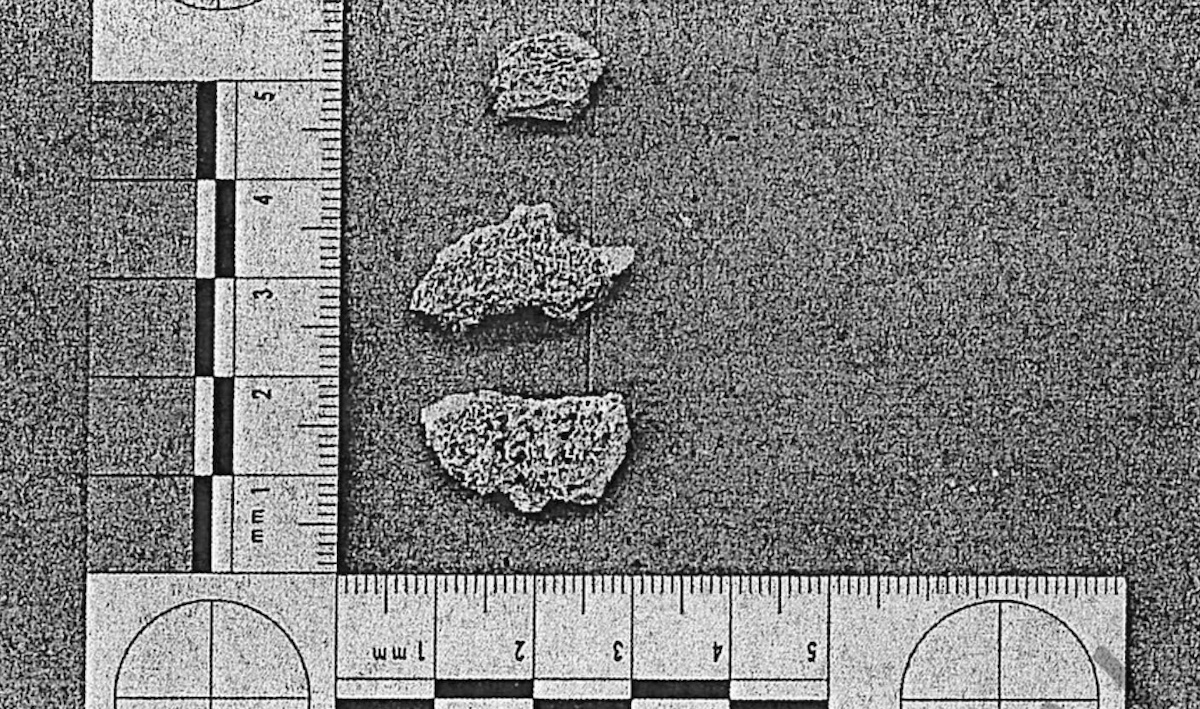Outside Expert Punches Holes in Cantin Debris Flow Report
Leading Forensic Anthropologist Calls Analysis ‘Confusing,’ ‘Unclear,’ and ‘Disingenuous’

Former UCSB assistant professor Dr. Danielle Kurin was acting far beyond her expertise when she declared the remains of missing Montecito debris flow victim Jack Cantin had been found, and she conducted analyses “that did not seem to be based in scientific methods,” a leading forensic anthropologist opined this week.
The techniques Kurin used to determine the remains’ antiquity and origin were often “confusing” and “unclear,” and portions of her published findings were outright “disingenuous,” said Dr. Marin Pilloud with the University of Reno, Nevada, who reviewed a report prepared by Kurin in the case at the request of the Independent, which recently obtained the 31-page document from the Santa Barbara County Sheriff’s Office.
“The report does not broadly follow best practices within the field, and it is difficult to understand how these conclusions are being made,” Pilloud said.
The comments by Pilloud, who regularly consults on forensic casework and co-authored the book Ethics and Professionalism in Forensic Anthropology, mark the third direct challenge to Kurin’s findings. DNA testing on the eight small bone fragments Kurin submitted last summer failed to confirm they belonged to 17-year-old Cantin, and a separate outside expert determined they had been in the ground far longer than the few years since the 2018 debris flow.
Multiple attempts to reach Kurin directly were unsuccessful. Her attorney, Dave Scher, based in Washington, D.C., said Monday he would provide a written statement on Kurin’s behalf, but he did not do so by press time.
Cantin’s mother, Kim, remains convinced of Kurin’s findings and is in a protracted dispute with the Sheriff’s Office over possession of the bone fragments. She has claimed the department is unfairly denying her the ability to declare her son deceased and officially bury him. Kim’s attorney, Barry Cappello, did not return a request for comment for this story.
Digging into the specifics of Kurin’s report, Pilloud noted that Kurin estimated the stature of the person the remains allegedly belonged to based on metatarsal (foot) measurements. “Yet no metatarsal bone was recovered,” Pilloud said. “Instead, a pedal phalanx (toe bone) is noted as being recovered, and as far as I know, there are no methods to estimate stature from a toe bone, and none are cited in the report.”
“The antiquity of the remains is also slightly confusing,” Pilloud continued. “When remains are skeletonized, it can be difficult to provide a maximum age, as once bones are skeletonized, they can stay skeletonized for decades, centuries, or even much, much longer.” It was not clear from Kurin’s analysis how she determined the bones had been buried for only two to three years, Pilloud said.
In addition, for an age-of-death estimate, Kurin used an unfused epiphysis — the expanded end of bones in animals that becomes fixed to the shaft when full growth is attained — to provide a range of 16-19 years. “However, typically, only a maximum age can be estimated with this information,” Pilloud said, “as individuals under 16 could also have an unfused epiphysis.”
Sign up for Indy Today to receive fresh news from Independent.com, in your inbox, every morning.
Moreover, Kurin fails to offer sound reasoning to explain how she knows the bones are of human origin, Pilloud said. The toe bone and unfused epiphysis could have hypothetically come from another mammal. “The report correctly describes how histological analysis can differentiate human from non-human bone,” Pilloud said of the method that studies the microscopic anatomy of biological tissues. “But it appears no histological analysis was done on these remains.”
The earlier DNA testing, conducted by a genome sequencing laboratory in Santa Cruz, found no evidence to substantiate Kurin’s claim that the bone fragments were human. In fact, the lab said, it was more likely they came from a cow.
Pilloud lastly wondered about Kurin’s qualifications to carry out such an investigation, given her professional background in bioarchaeology, the study of skeletal remains in historical contexts. Forensic anthropologists, meanwhile, work with modern cases that fall within the scope of law enforcement inquiries.
“There are several ways to demonstrate expertise and qualifications within forensic anthropology — through publication record, board certification, or even membership in professional organizations,” said Pilloud. “I am unfamiliar with any such publications by Dr. Kurin. Further, she is not a board-certified forensic anthropologist, nor am I aware of her involvement in professional organizations such as the Society of Forensic Anthropologists or the American Academy of Forensic Sciences.”
Concerns have been raised since the beginning of the case over how and when Kurin notified the Santa Barbara County Coroner’s Bureau of her discovery, as well as the manner in which she publicly announced through the media alongside a grieving Kim Cantin that the teen’s remains had finally been unearthed after three long years of searching.
Email exchanges between Kurin and the Coroner’s Bureau obtained by the Independent also reveal Kurin falsely claimed to investigators that her work had been peer-reviewed by a colleague with a doctorate and a professorship at Washington State University. In reality, that individual was a graduate student and adjunct instructor on whose PhD committee Kurin sat.
At the time last summer, Kurin was applying for tenure at UCSB, which she was granted. However, in January, as pointed questions started being asked about her handling of the Cantin matter, she abruptly resigned her position.
Kurin, the daughter of noted cultural anthropologist Richard Kurin, the Smithsonian Institution’s Distinguished Scholar and Ambassador-at-Large, has previously been accused of misconduct. In 2016, she was placed on a three-year administrative leave from UCSB after an investigation found she had retaliated against students who reported her partner at the time for sexual harassment.
Support the Santa Barbara Independent through a long-term or a single contribution.



